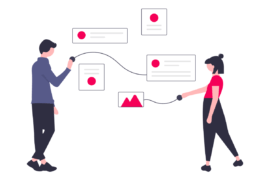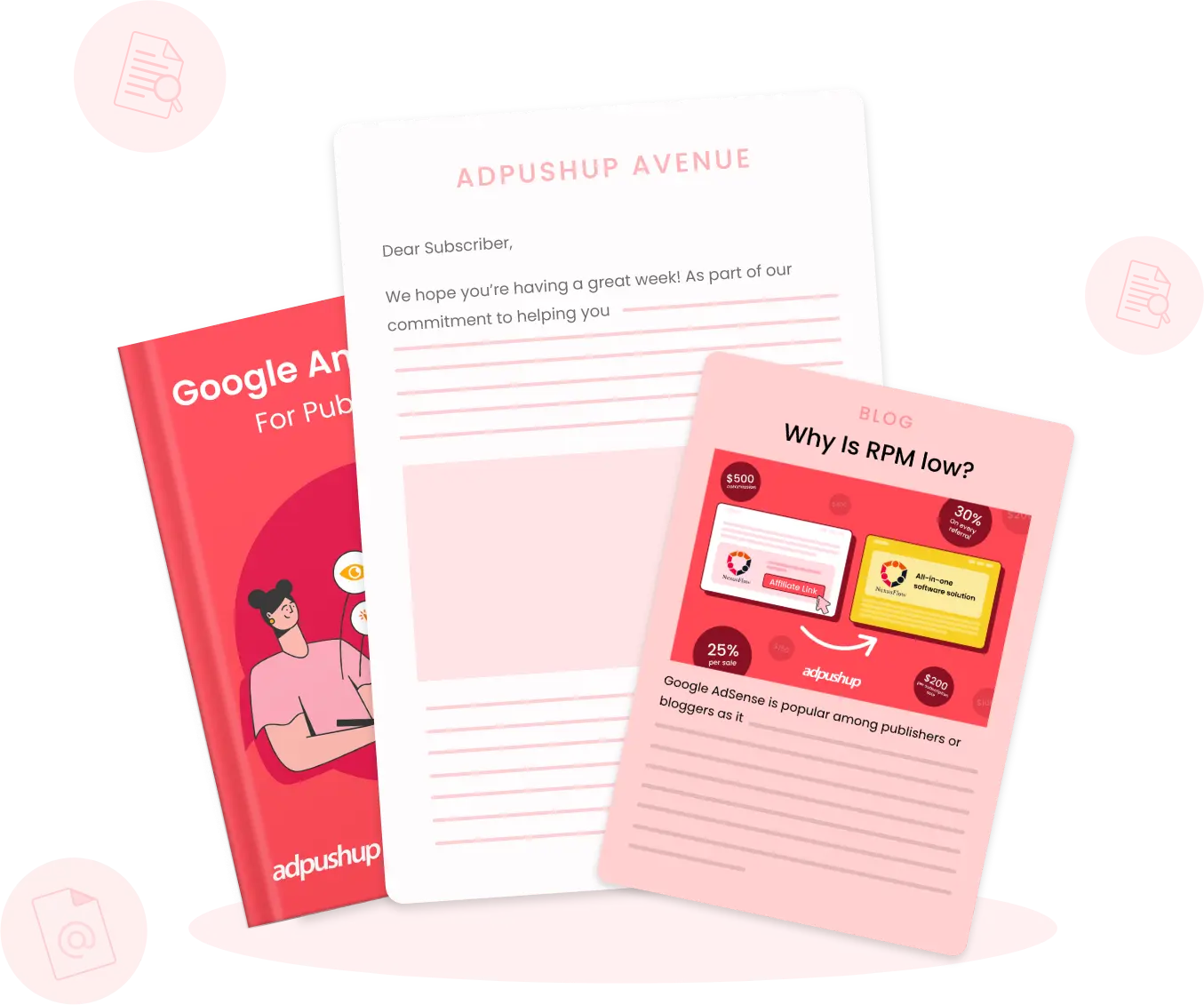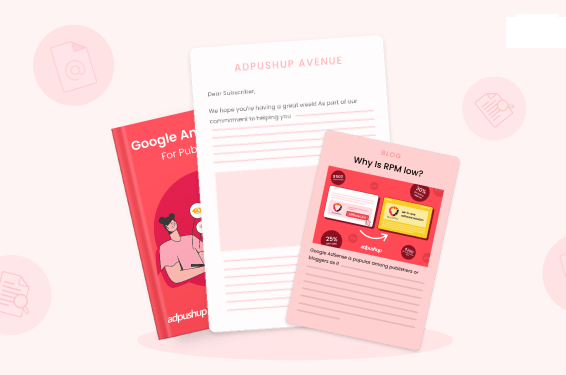AdSense arbitrage is tricky business. In this post, we’ll explain how it works and what to (also what not to) do in AdSense arbitrage.
The complexity in the ad tech industry is only increasing with time. Publishers have to constantly look for newer alternatives to effectively monetize their websites. This can be because of technical changes that occur in the industry or because conventional methods fail to produce desired results.
In order to actually generate revenue, it is necessary to bring traffic to websites. Publishers mostly rely on organic traffic, however, that may not be enough to increase ad impressions and CTR. Besides, publishers also need to think about remaining compliant with network policies, which further complicates matters.
While organic traffic works well for publishers that have high-quality websites, it may not be enough for smaller publishers. Because of this, various publishers resort to paying for bringing traffic to their websites. This is called traffic or digital arbitrage.
In this blog, we are specifically going to discuss what AdSense arbitrage is and everything else publishers may want to know about it.
What is AdSense Arbitrage?
Arbitrage is the simultaneous buying and selling of an asset. The vendor sells an asset at a price higher than they bought it for, thereby gaining profit.
AdSense arbitrage works in a similar manner. The publisher will invest X amount to derive traffic for their website, have AdSense ads placed on that website/web page, and, lastly, compel visitors to click those ads to earn via AdSense.
Quite simply, AdSense arbitrage means getting traffic using paid means (coming up) and converting that traffic into paid clicks by running AdSense ads. The catch with digital arbitrage is to earn higher revenue through AdSense ads than the initial expense made on buying the website traffic.
Also read: Google AdSense: Guide to Improving your Existing Revenue
How to Get Website Traffic for AdSense Arbitrage?
It is known that there are two ways to bring traffic to a website: organic and paid. In case of AdSense arbitrage, where the intent is to make quick money, the usual way to get started is by buying paid traffic. This is relatively quicker and requires less effort than organic.
But it is also important for publishers to note that maintaining good SEO and getting organic traffic is what makes a website valuable over a long period of time.
Since now we are talking about how to buy website traffic, here are a handful of sources that can help you get traffic for AdSense arbitrage:
- From Facebook > Time to go Mobile
Facebook is without a doubt one of the top choices when the aim is to buy quality traffic for a website. Of course, quality is a byproduct of right audience targeting. Facebook ads can help generate traffic with a decent CPC if you, the buyer, can achieve decent CTRs on those ads.
Since almost 75% of the traffic that Facebook gets comes from mobile devices, it is a good idea to target/prioritize mobile traffic over desktop. So, make sure your website is mobile optimized and monetized if you consider Facebook mobile ads to get traffic. - From Taboola > Put Your Content to Work
Content resources, such as blogs, ebooks, real-life case studies, can be of great help when it comes to getting traffic. Hence, Native advertising platforms like Taboola can help you dig the goldmine if you’re planning for AdSense arbitrage.
The platform lets you roll out your content to an audience that you know can increase CTRs, which can eventually drive some traffic to your AdSense ad web page. - From RevContent > Earn More with Native
If you decide not to monetize with platforms like Taboola or Outbrain, RevContent is another contender that can help you get traffic with help of content. RevContent picks up really fast, offers more control over content promotion actions, location and device based targeting, and has credible partnerships. Furthermore, it allows you to make revenue alongside AdSense via its own ad widgets.
The above mentioned channels are popular choices for digital arbitrage and can help in bringing quality traffic to your website/web page.
Apart from these Yahoo Gemini, Bing ads, Quora, and AdWords can also help you bring traffic.
How Does Adsense Arbitrage Make Money?
After the paid traffic is being directed to your website, it is supposed to translate into increased ad impressions and CTRs. The key to making money with traffic arbitrage is to buy traffic at a lesser amount than Google AdSense is paying you for serving their ads.
We advise publishers to pay more attention to RPM than CTC when they are looking for leveraging traffic arbitrage. This is not to say that CTC and CPC are not important metrics that need to be tracked. But RPM can give you a better understanding of how much you can earn with digital arbitrage.
Your AdSense RPM will depend on your CPC. According to Google, RPM
is calculated by dividing your estimated earnings by the number of page views, impressions, or queries you received, then multiplying by 1000.
Now for example, your CPC is $0.50 for 50 clicks, then your RPM will be $10.
For profiting from AdSense arbitrage, you will need to pay less than $10 for buying traffic.
What Google Feels About AdSense Arbitrage?
Just like AdSense is for publishers, Google ads (before AdWords) caters to advertisers. So, Google has to take care that publishers gain from traffic arbitrage is not affecting advertisers. Publishers will have to take care that they are not violating any policies of AdSense or AdWords while engaging in digital arbitrage. By treading carefully, AdWords can be used for bringing enough traffic to your website.
Let’s try understanding how the AdWords to AdSense arbitrage cycle works.
- Bid for a cheap keyword to favor a low-budget AdWords (PPC search) ad.
- Set the destination landing page to your web page where AdSense ads reside.
- Take the visitor to that web page when the AdWords ad gets clicks.
- Compel ad impressions/clicks on the destination page for higher revenue from AdSense ads.
Here’s how the math looks like:

AdWords’ guidelines suggest that users should not have destination pages with insufficient original content and/or designed with the primary purpose of displaying ads.
Likewise, from AdSense’s point of view, the guidelines suggest that users should not have artificial traffic sources such as clickbots or incentivized clicks. The guidelines also recommend having proper monitoring of the traffic sources.
Simply put, AdWords hates suspicious destination web pages and AdSense hates traffic coming from suspicious sources. AdSense accounts have been banned where Google felt the AdWords to AdSense arbitrage was in violation of their guidelines. Bad traffic sources can get publishers in trouble and impact their earnings.
So, it is imperative that invalid traffic should not be brought to the website. Publishers should keep monitoring the traffic that they have paid for in order to take advantage of traffic arbitrage.
AdSense Arbitrage: Facts Publishers Should Remember
It has been established that AdSense arbitrage is tricky. So, we have mentioned some key points below that publishers should consider when they are using digital arbitrage.
#1 Provide What You Promise
Instead of going for organic traffic you are leveraging quickly acquired paid traffic. So it has to be purposeful. If you’re using any medium to buy traffic, make sure your destination page is not just AdSense optimized, but is primarily true in terms of providing what the ad promised.
In case you use Facebook to show a product/service/consulting ad, your destination web page should HAVE IT. Similarly, if you use content (Taboola/Outbrain/RevContent) to drive traffic, again make sure your destination web page HAS the content.
#2 Create High Quality Destination Page
Google prioritises quality, rewards good user experience, and despises non-contextual user journeys. Whichever turn AdSense arbitrage may take, you should not compromise with the landing page quality.
As a publisher, you must ensure it’s a conversion-friendly landing page. A good landing page supports easy interface and experience, minimal page latency, enriched content, and alignment with the ad (which bought you the traffic initially). The ultimate goal is to cope with factors determining your website/web page quality score.
#3 Monitor Your Traffic Sources
Even if you are getting good traffic via paid channels, you have to keep an eye on traffic sources, as we have already mentioned above. You will need to ensure that no traffic source or third-party is sending you artificial traffic. Since AdSense closely monitors this data, not ensuring policy compliance can lead to your account being banned.
The simplest way of tracking and monitoring traffic sources is by using a Google Analytics account.
#4 The Ideal AdSense Arbitrage Setup
Here we have provided you with a quick idea of how to get started with AdSense arbitrage:
- A niche around which you base your website.
- An AdSense account that you will set up on your website to run ads.
- Content that you plan to publish on your website for user engagement.
- A strategy that you need to source traffic for your website.
- A/B testing, so you can eliminate low-yield traffic sources.
Remember, AdSense arbitrage is an inherently risky business. However, it may generate a lot of money if managed carefully. First and foremost, you need to keep all the above mentioned facts about AdSense arbitrage in mind and try to get the execution right while remaining compliant.
Key Take Aways
- AdSense arbitrage is a way to make quick money by buying traffic, but maintaining good SEO and getting organic traffic is what makes a website valuable over time.
- Content resources can help you get traffic to your AdSense ad web page. Native advertising platforms like Taboola can help you do this.
- RevContent is a platform that allows you to monetize your content with AdSense.
FAQs
The process refers to using paid traffic to increase CTR and RPM. Publishers will need to buy the traffic at a rate lower than their AdSense earnings per click.
Some of the key sources for getting paid traffic are Facebook, Taboola, ReCovenant, Bing ads, Yahoo Gemini, and AdWords.
Google AdSense is an ad network through which publishers can monetize their websites. It allows publishers to offer their ad inventories for auction. The highest paying ad is then displayed on the user’s browser. AdSense specifically displays ads based on the content available on a publisher’s website.
Publishers get about 68% of the total earnings and the rest goes to Google. While the exact breakdown is not known, this amount will be reflected in your account.
AdSense is one of the many ad networks in the ad tech industry. Publishers can definitely opt for trying out other options that give them more advantages. You can also choose to use multiple ad networks simultaneously. Moreover, technologies such as header bidding are also ideal alternatives to AdSense.
Google does not prohibit the use of paid traffic. So, technically digital arbitrage is legal. However, if the traffic that you are buying is invalid, you will be violating Google’s policies. Therefore, it is important to know where your traffic is coming from.

Shubham is a digital marketer with rich experience working in the advertisement technology industry. He has vast experience in the programmatic industry, driving business strategy and scaling functions including but not limited to growth and marketing, Operations, process optimization, and Sales.








7 Comments
Good article.
As an expert in AdSense Arbitrage, I can tell you that you have covered the basics of this business model, but traffic arbitrage is a lot more than that; monitoring the huge amount of traffic alone can be explained in a separate article. But I enjoyed reading this article. Thanks
Nice article.
Thank you! 🙂
Is there any complete course on Adsense arbitrage?
Hi Tony,
I’m afraid this is the only resource that we have on AdSense arbitrage.
Hi,
It’s good content about arbitrage.
Ultimately whatever we do the content should be at its best.
Low-quality content with the intention of only making money will be get rejected by the readers and ultimately the traffic will reduce.
Another fact is that all the points mentioned above require a lot of experiments and hard work.
You have to hustle with these things every day to make your income handsome.
Thanks
Dipanjan Biswas